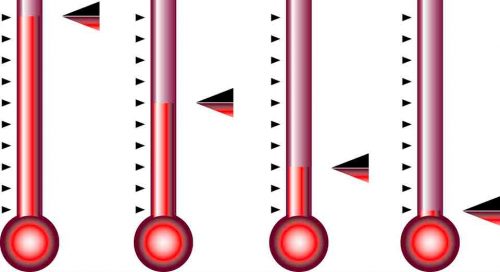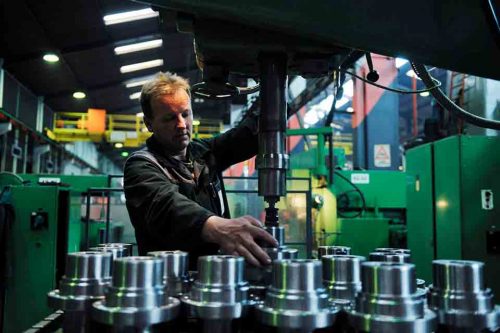Newark Wire News
Newark Wire News
8 Things to Consider When Purchasing Wire Cloth

If your company needs wire cloth products, you have an extraordinary range of options to choose from. That means you need a clear understanding of some important functional requirements in order to select the right wire cloth.
Here’s a closer look at 8 features to consider when purchasing wire cloth.
1. Temperature
Understanding temperature thresholds is especially important in high-temperature applications when a fireproof wire mesh is needed. Given woven wire mesh can be made of any malleable metal or alloy, you should choose the specific material that works for your processes. A sampling of some of the maximum operating temperatures includes:
| Material | Temperature (Fahrenheit) |
| Stainless Steel, Type 304 | 1,500 |
| Incoloy | 1,600 |
| Stainless Steel, Type 330 | 1,650 |
| Inconel | 1,800 |
| Nichrome V | 2,000 |
| Nickel | 2,700 |
| Tungsten | 5,000 |

2. Viscosity
For applications such as wastewater treatment, oil handling and other petrochemical filtration, viscosity is an important consideration. Thinner, less thick fluids flow through filters faster. For highly viscous material processing, you need to discuss which type and size of wire mesh are necessary to achieve optimal results. In many cases, viscosity is directly related to temperature.
3. Pressure drop requirements
As materials flow through a filter and contaminants are removed, the pressure drops. After being filtered, the pressure will be lower than before. The wire cloth you choose for your filter media plays a big role in determining the pressure drop rate. Ultimately, the pressure drop will reach a point where the filter needs to be changed. Efficient wire mesh solutions that meet your pressure drop requirements reduce costs and contamination risks.
4. Specific gravity
Tailoring your wire cloth specifications often depends on the use. For many manufacturing processes, wire cloth mesh baskets and sieves are used to measure and test the specific gravity of a filtered material. Commonly made of stainless steel or brass, these products need to be ordered to sync with your specific gravity testing needs.
5. Particulate matter size
Particulate size is a seemingly obvious consideration when choosing the right wire mesh. Knowing the size of retained particles helps inform the mesh count, opening size and wire diameter. Test sieves in particular should be purchased to meet the required standards for retained particulate matter sizes.
At Newark Wire, we recommend selecting a size slightly smaller than that required.
None of these components work in complete isolation. For example, different mesh products with the same particle retention rate can have very different flow rates and pressure drop rates. Working collectively with your wire cloth provider helps you identify the right product for your manufacturing needs.
6. Flow Rates
Flow rate, viscosity and pressure drop are highly interrelated. For processes that mandate a required flow rate, you’ll want to consider the Percentage of Open Area to help determine the right mesh product.

7. Contaminant Types
The types of contaminants will help determine the material to be used, wire diameter, wire mesh density, tolerance, opening size and weave type.
8. Corrosive Effects
While most wire cloths are susceptible to corrosion, there are materials such as titanium and alloys like Hastelloy, Inconel and Nichrome that can withstand more corrosive applications.
Bringing It All Together
How do these myriad and interconnected criteria come together to select the ideal wire cloth? It’s best done in partnership with a skilled wire mesh producer like Newark Wire.
A process engineer who decides to use wire cloth in a liquid system must coordinate pressure-drop requirements with liquid temperature, viscosity and specific gravity. The engineer must also integrate information on particulate matter size and flow rates, and consider the nature of the contaminants or corrosive environment to be encountered. Once the parameters are set, hundreds of standard cloths are available in the common metals. In most cases, the engineer will not need to custom design a cloth, and manufacturers are helpful with application and metallurgical assistance for specific problems.
In summary, when choosing wire cloth, consider:
- Key determinants including temperature, viscosity, pressure drop, specific gravity, particulate size, flow rates, contaminants and corrosive effects
- That many of the considerations are interrelated
- Working with an experienced wire cloth company like Newark Wire helps you select the right product
Newark Wire has been providing high-quality wire cloth for more than 100 years. Learn more about our products and how to select the right wire cloth by contacting us today.
